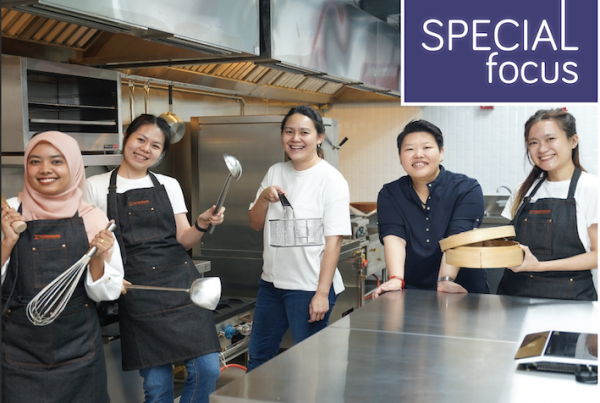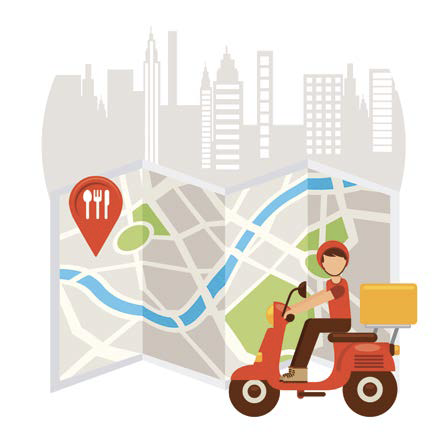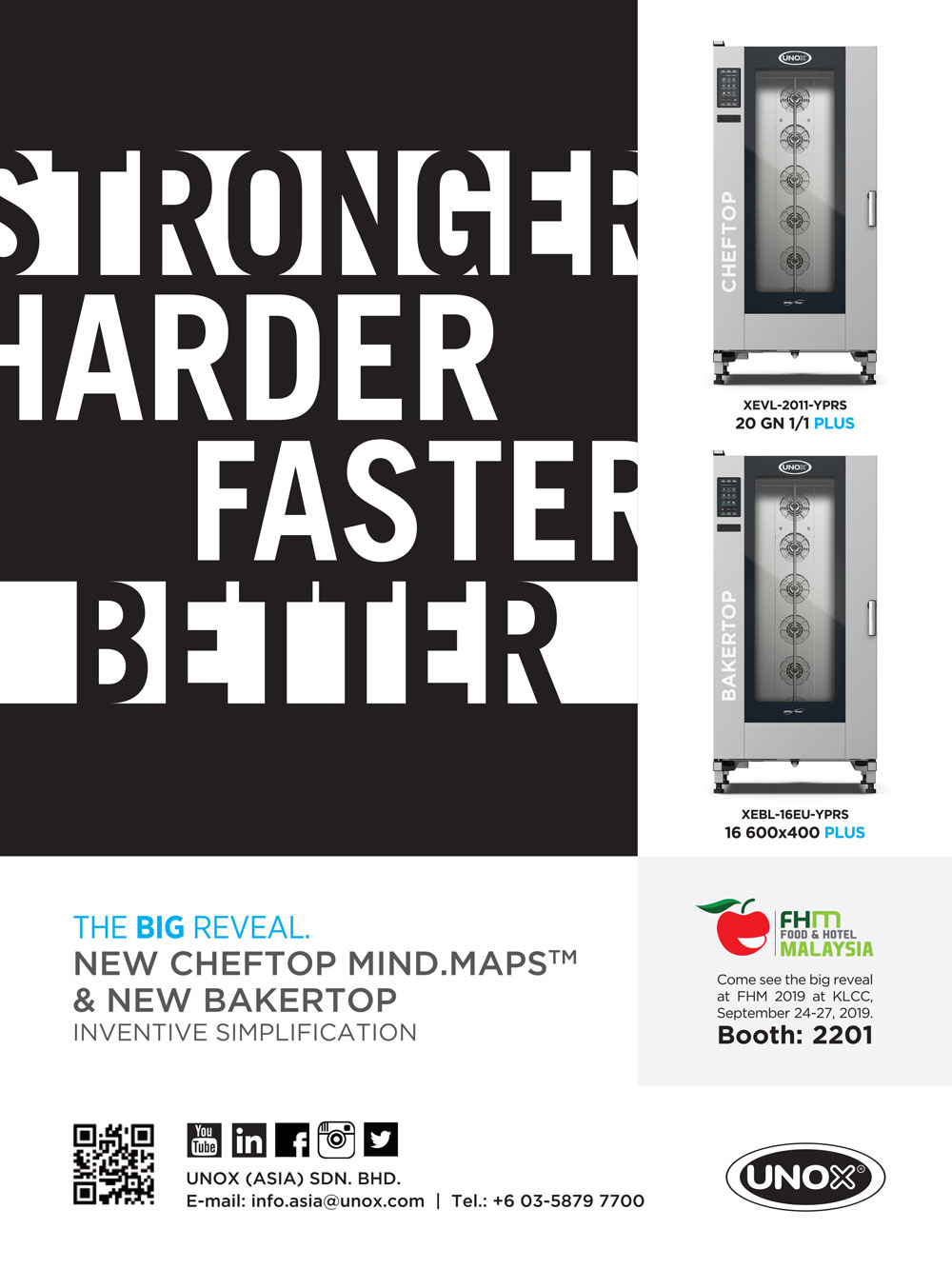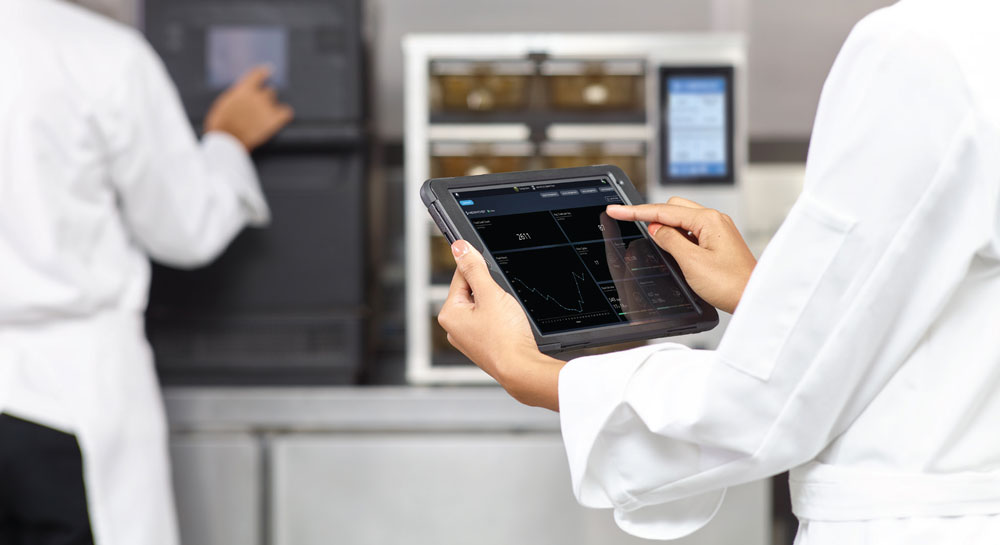
Iot Solutions That Can Improve Commercial Kitchen Operations
Just like how the Internet of Things has revolutionised the Front-of-House operations through technology and connectivity, IoT solutions are also incredibly useful in commercial kitchens, where it is vital to have complete visibility and control over the daily kitchen operations. Equipment like stoves, ovens, deep fryers, refrigerators, walk-in freezers and HVAC systems all require regular monitoring for breakage, temperature, and compliance. As a result, restaurant employees are often compelled to check on them multiple times during the day and record data on temperature and energy consumption. This does not only affect productivity, but also hampers product quality and creates unwanted expenses in the long run.
Understanding the daily stress of running restaurants, KitchenConnect® by Welbilt puts the focus back on your customers, providing remote access to equipment data that allows you and your team to manage your operation more efficiently and more profitably. Delivering 24/7 kitchen equipment integration with IoT technology and monitoring systems designed specifically for foodservice, KitchenConnect puts the power of information to work so processes can be optimized, food quality and the guest experience can be improved, waste and equipment downtime can be reduced, menus and software can be done remotely, and increased revenue can be realized. Actionable alerts to thousands of locations on 4 continents, 24 hours a day 7 days a week, put real time management at your fingertips. With information that responsive, useful and simple to use, you can take operations from average to great and realize benefits like never before. Welbilt’s KitchenConnect gives you the peace of mind that even when you can’t be onsite, information from your restaurant can be available 24/7/365 wherever you are.
In addition to digitally connected kitchens, by leveraging on IoT, kitchen equipment on their own can also give you visibility and control over daily kitchen operations. Sensors that have been embedded in these equipment picks up vital pieces of information and wirelessly uploads them to a cloud-based platform, where this data is analysed and sent back to the restaurant manager via a mobile app or other interface. These built-in sensors are also able to troubleshoot existing problems as well as anticipate potential equipment failures and proceed to alert you of required maintenance action. Below are some IoT solutions in kitchen equipment that can benefit a commercial kitchen.
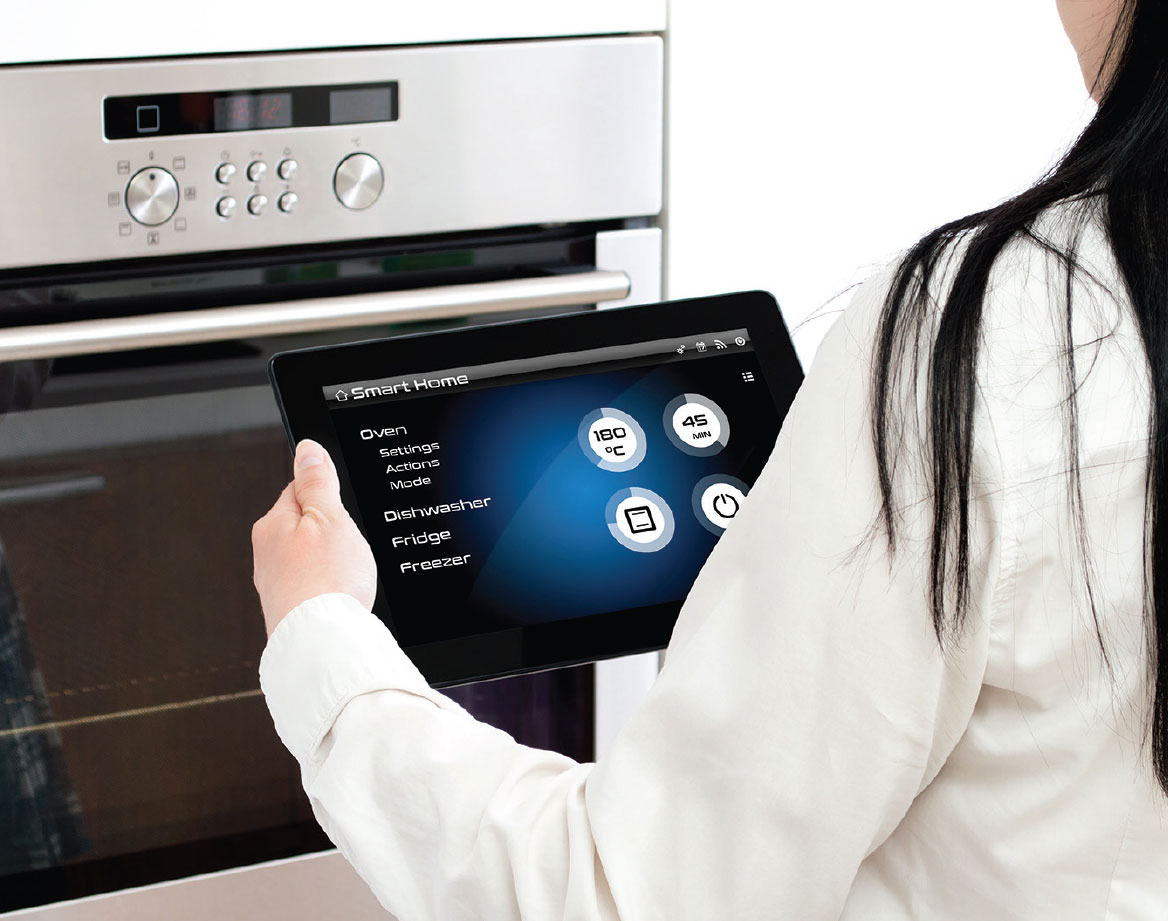
SMART COMBI OVENS
Combi ovens make it possible for chefs to perform an impressive array of functions within a single piece of equipment. Not only does it cook food quickly, a combi oven also takes all monitoring and checking work off the kitchen staff’s hands. It adjusts temperature, moisture and cooking time settings on its own, monitors the food’s browning and degree of doneness, as well as save chefs the trouble of repeatedly turning pan-fried dishes. A great example is Rational’s SelfCookingCenter®, the world’s first truly intelligent oven.
BLUETOOTH TEMPERATURE MONITORING SYSTEMS
Complying with HACCP guidelines or checklists for food safety can be a cumbersome process. This is why many restaurants have started using Bluetooth temperature monitoring systems to ensure their food and equipment are up to par. Using handheld probes and fixed sensors, restaurants can manually or automatically measure the temperatures of their key assets in as little as four seconds. Customized limits for each food and equipment can be easily programmed and Managers can be alerted if any temperatures are beyond their acceptable threshold. These Bluetooth sensors can also wirelessly record temperature readings in a HACCP log so that employees do not have to, thus preventing staff from falsifying daily reports and simply eliminating paper logs altogether. Wireless temperature systems ultimately take a proactive approach to food safety, helping restaurants to avoid product loss and most importantly protect customer safety.
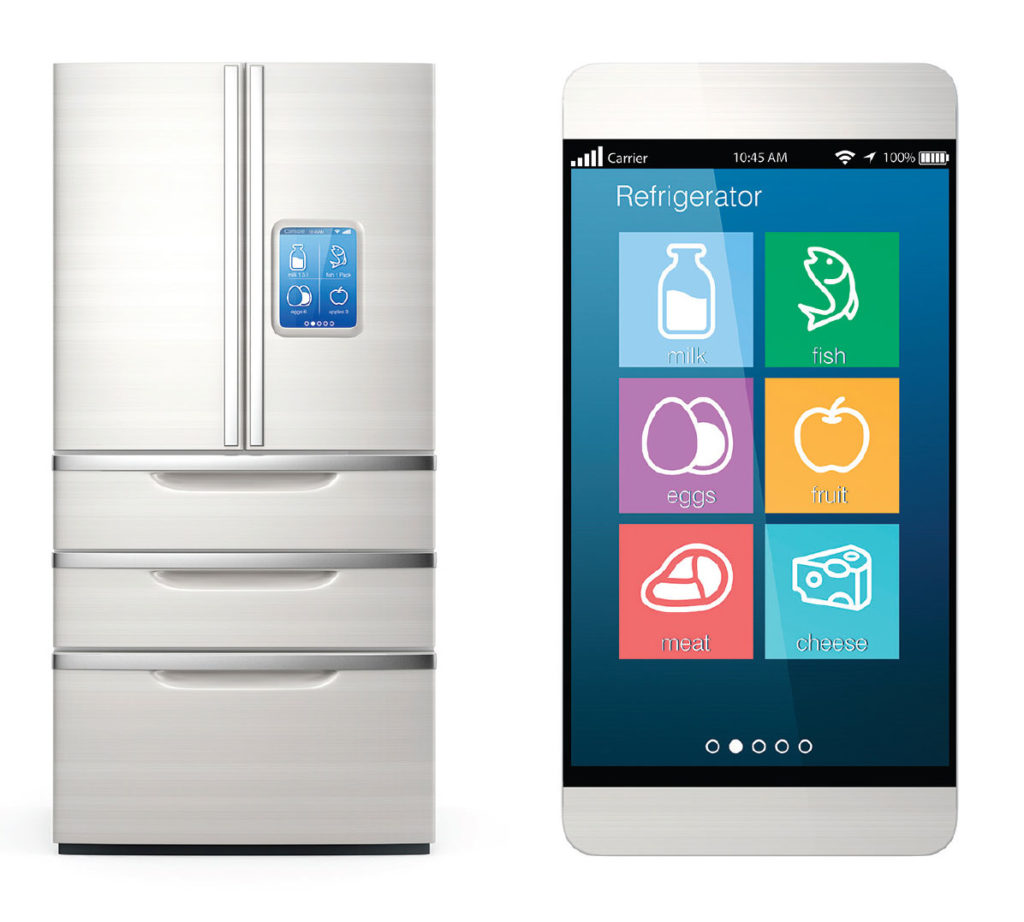
SMART REFRIGERATORS
The refrigeration unit is one of the most important equipments in an F&B business because this is where all the vital stocks are kept. With IoT technology, a refrigerator can become separate appliances – each shelf, drawer, and freezer section can be monitored and thermostatically controlled independently. “Incompatible” foods, such as cakes and pies, can be stored and cooled/frozen at different levels in the same appliance. The system can determine spoilage time, when food is supposed to be used by, if its chemical makeup changes (such as a marinade), and if pathogens are present. Some Smart refrigerators can even monitor inventory levels, which will then send alerts to the Chef or kitchen manager to order more stock when it runs low.
For more affordable options, restauranters can also install IoT temperature-monitoring devices or wireless IoT thermometers to ensure that the refrigerators are operating at optimum temperatures and the integrity of food items are kept intact. The Pine Garden Bakery and Empire State Restaurant in Singapore have both leveraged on these IoT refrigeration monitoring devices.
SMART FRYING PAN
Aptly named ‘Pantelligent’, this smart frying pan developed by a team of MIT engineers, has an in-built temperature sensor inside it that communicates with a Pantelligent smartphone app. Together, the pan and the app will guide you to cook everything perfectly – no more overcooked, undercooked, or burned food. Chefs will know exactly when the pan is at the right temperature, when it is time to flip or stir, and when the food is perfectly done.
EGG MINDER
Developed by invention platform, Quirky, an Egg Minder is wirelessly connected to your phone to help track the duration of each egg that it contains and how long it has been there in the tray. When the tray is opened, the smart device blinks an LED light next to the egg that’s been in it the longest. Based on this, a Chef can decide whether to crack that particular egg or not.
DIGITAL INVENTORY TRACKING
The pen-and-paper method of tracking inventory in a commercial kitchen is now a thing of the past. Today, with technology and the integration of IoT, many restaurants have switched over to a digital inventory tracking system as this provides restaurant operators with better visibility of their main stocks. Through a mobile device, this digital software allows restaurant operators and kitchen staff to not only keep track of actual product counts, but also monitors theoretical inventory levels. With the help from POS data and recipes, the system can calculate how much inventory a restaurant should have on-hand based on the menu items sold and alert managers to any discrepancies from over-portioning, waste, and theft so that these issues can be resolved immediately. A good example of a digital inventory tracking system is Smart Inventory by Agile Solution Msc which easily monitors restaurant stock without the need for much manual intervention.
AUTOMATED PURCHASING TOOL
One of the biggest pain points for restaurants is not having enough food to serve. With an automated purchasing system that is linked directly to your inventory system, this digital tool can help managers stay on top aqqasof stock by alerting them when product levels are low. When inventory reaches a certain threshold, managers can enable automatic orders to placed. The entire purchasing process can be managed through an app – from approving suggested orders to verifying invoices and even comparing vendor bid prices. With so much going on in a restaurant, it helps to have a purchasing software to keep an eye on inventory.
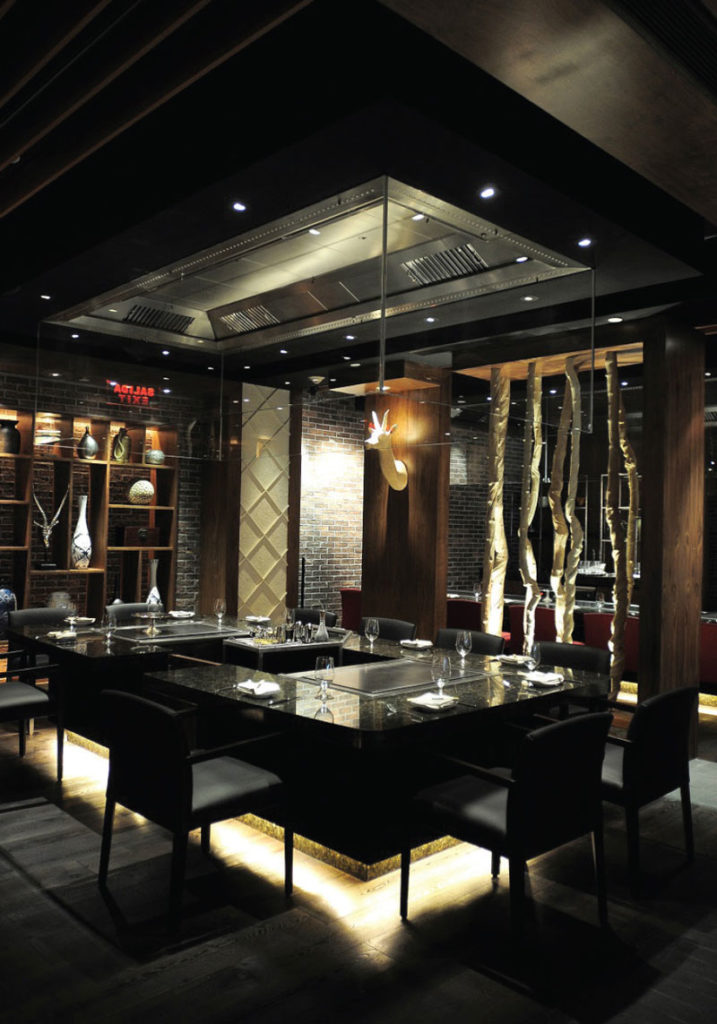
HVAC USAGE AND TEMPERATURE TRACKING
Energy costs in the food services sector are three times higher per square foot in comparison with other industries. But heating, ventilation and air conditioning (HVAC) systems are a particularly hefty energy and financial drain.Therefore, it is important to install a system that can monitor HVAC energy usage, as well as provide real-time alerts when problems arise. Suitable for hoods and ventilated ceilings in restaurants, Halton’s M.A.R.V.E.L. Intelligent Demand Controlled Ventilation system which monitors by zone or kitchen block reduces exhaust airflow rates by up to 64%. For example, in a hood ventilation system, M.A.R.V.E.L. can adjust the exhaust airflow hood by hood and in a fully independent way. If just one cooking range is operating, only the airflow for that hood concerned will be automatically adjusted. The other hoods will continue to operate at a low flow rate. It works the same way with the zones of a ventilated ceiling. The Halton’s M.A.R.V.E.L. system also regulates the exhaust fan speed to keep power consumption at a bare minimum, resulting in massive savings on air conditioning and on the electrical consumption of the fans.
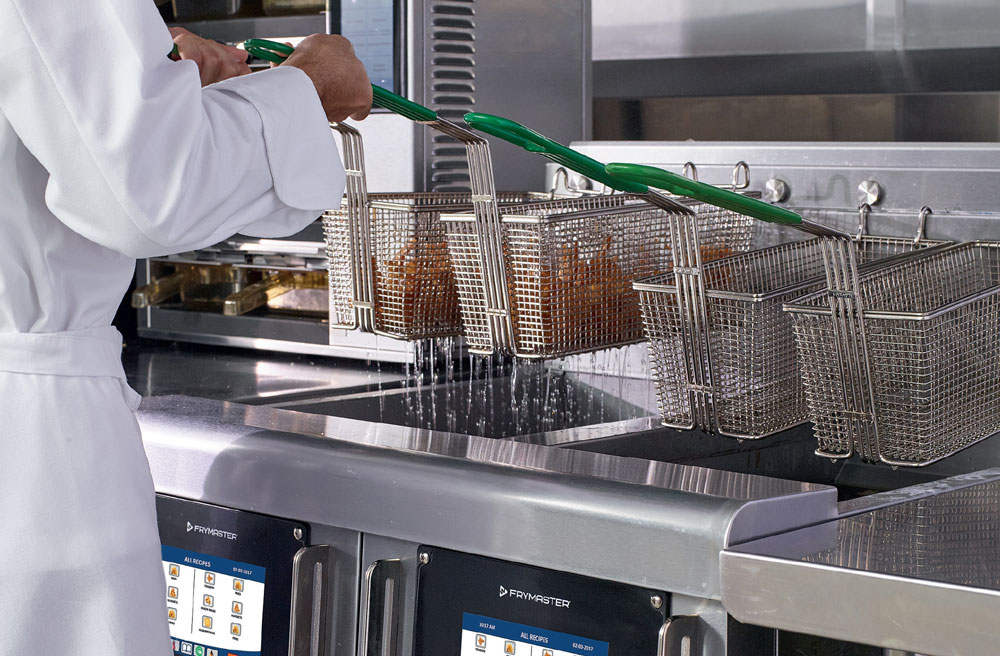
FRYER OIL MANAGEMENT
Managing cooking oil and grease disposal in any restaurant is a dangerous, messy and labor-intensive task. For this reason, many restaurants have begun installing automated systems such as Welbilt’s Frymaster FilterQuick® Oil- Conserving fryers with FQ4000 easyTouch® controls, Automatic Filtration (AF), optional KitchenConnect® IoT connectivity and optional Oil Quality Sensor. Be it gas or electric, Frymaster’s oil conserving fryers take 40% less oil to fill; resulting in less oil used and less oil discarded into the waste stream. Since regular filtration is the key to extending oil life and to ensuring quality fried foods, Frymaster’s automated filtration makes this process quick, easy and convenient. The FQ4000 easyTouch controller makes cooking and filtering simple and intuitive. The controller’s fry station management features monitor and help control food and oil quality, oil life, and equipment performance. An optional Oil Quality Sensor monitors the health of the oil and indicates with great precision the true point that oil needs to be discarded.
In summary, IoT connected devices and equipment can make the running of your restaurant operations a whole lot more smooth and streamlined. Simply serving good food is not enough to keep a restaurant in business as it is the newest innovations and technologies that give restaurants the much-needed edge over the competition. Although these IoT connected devices and equipment come at a cost, the results that restaurants see in their business is well worth the investment.







